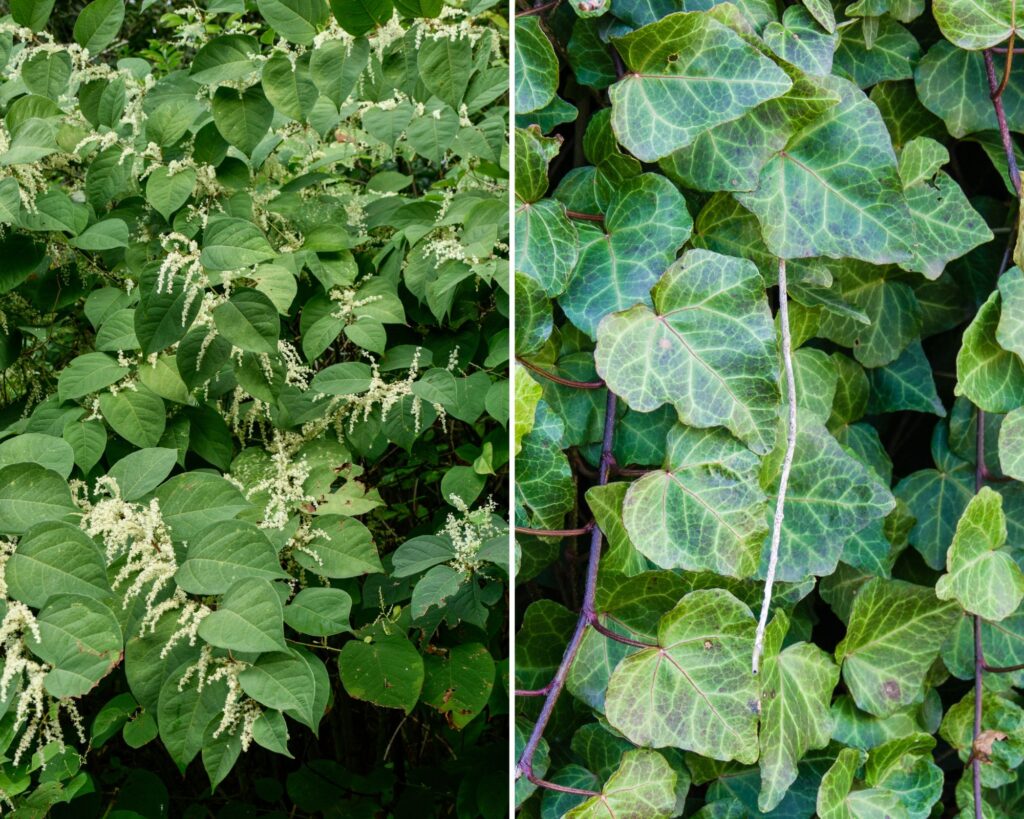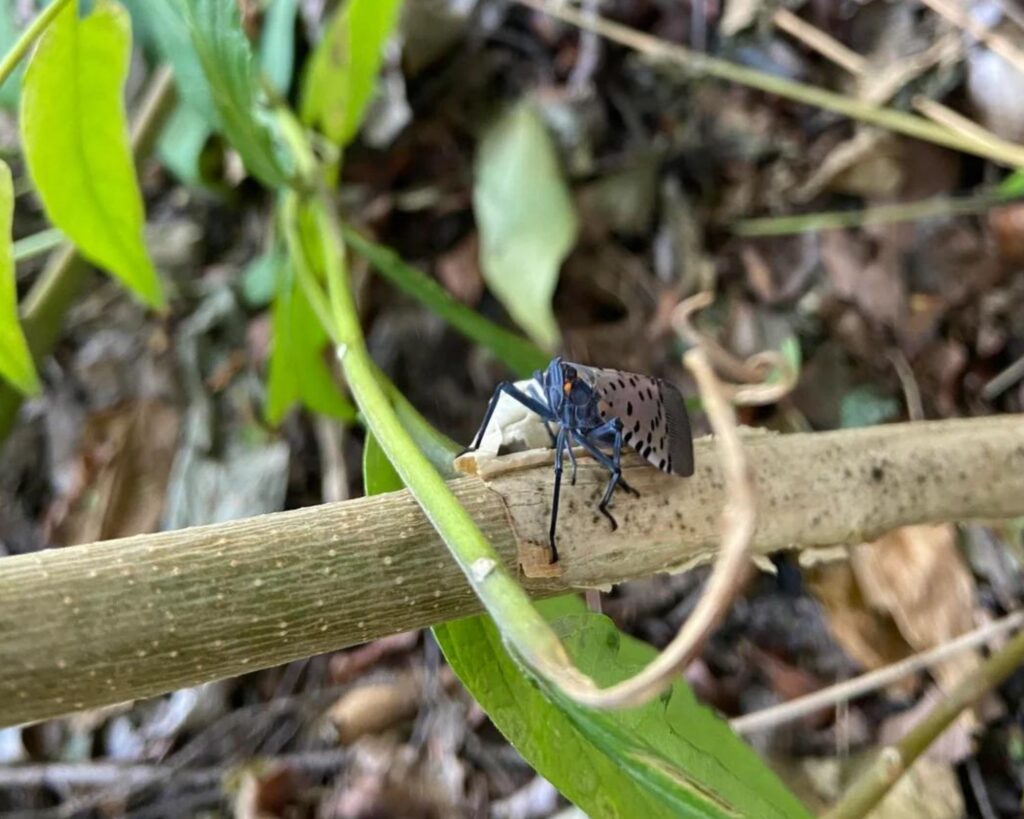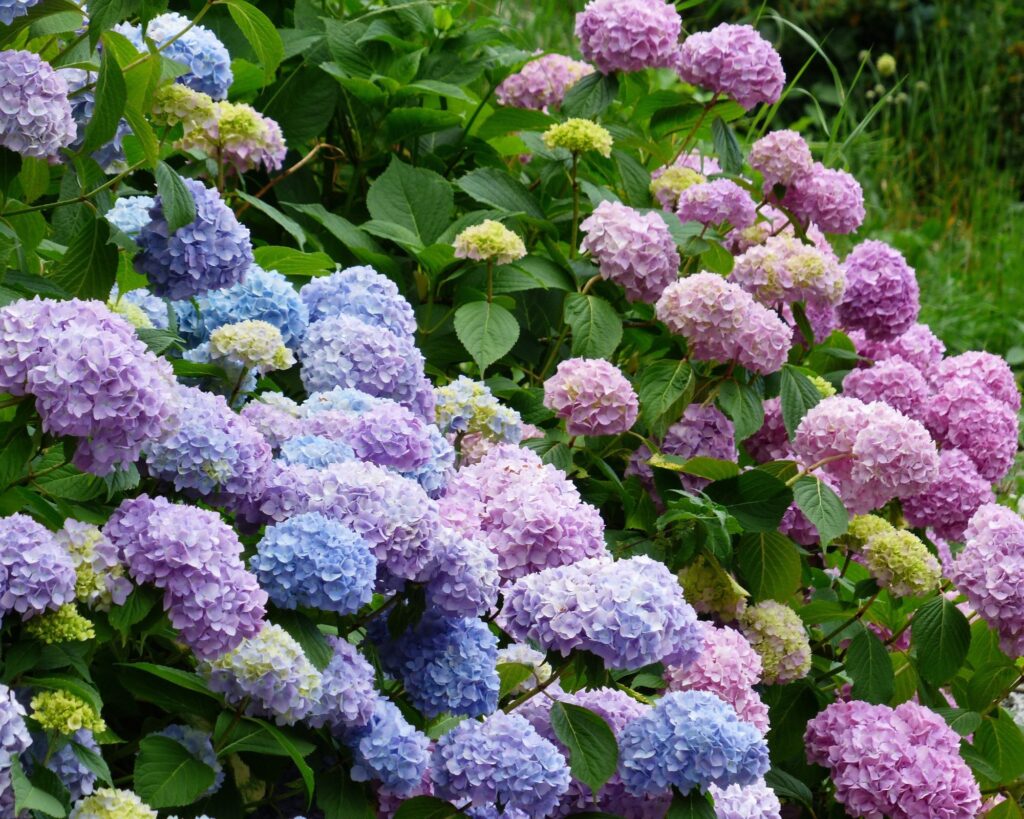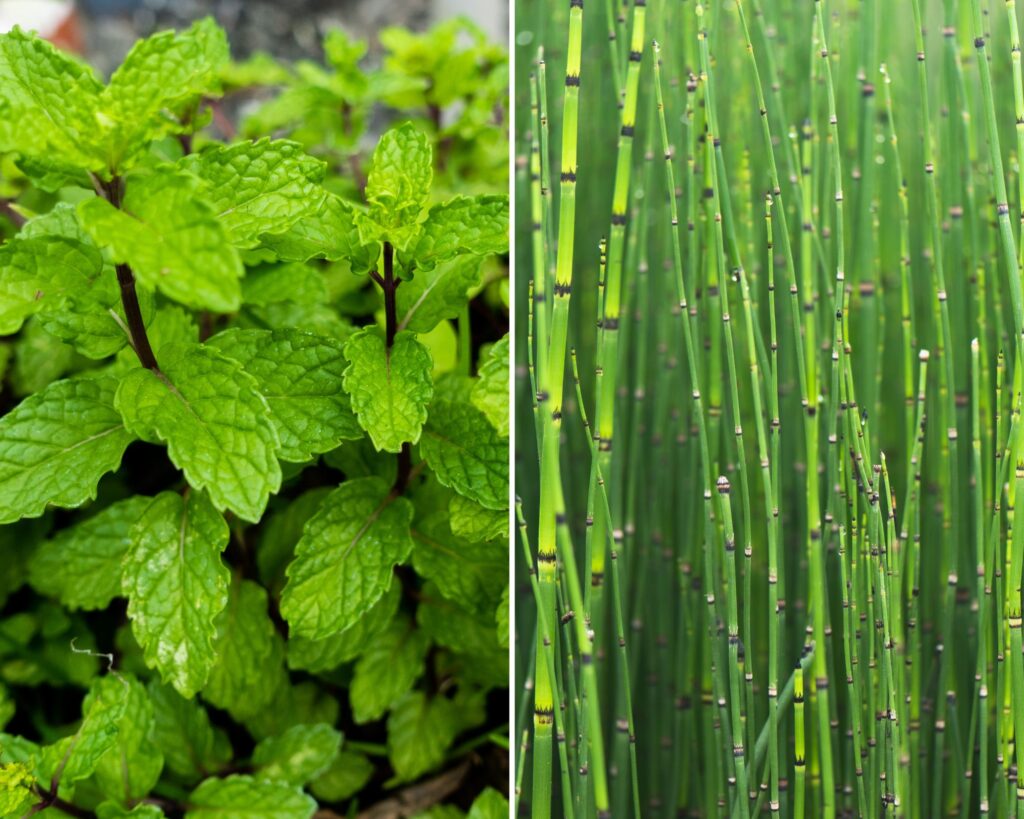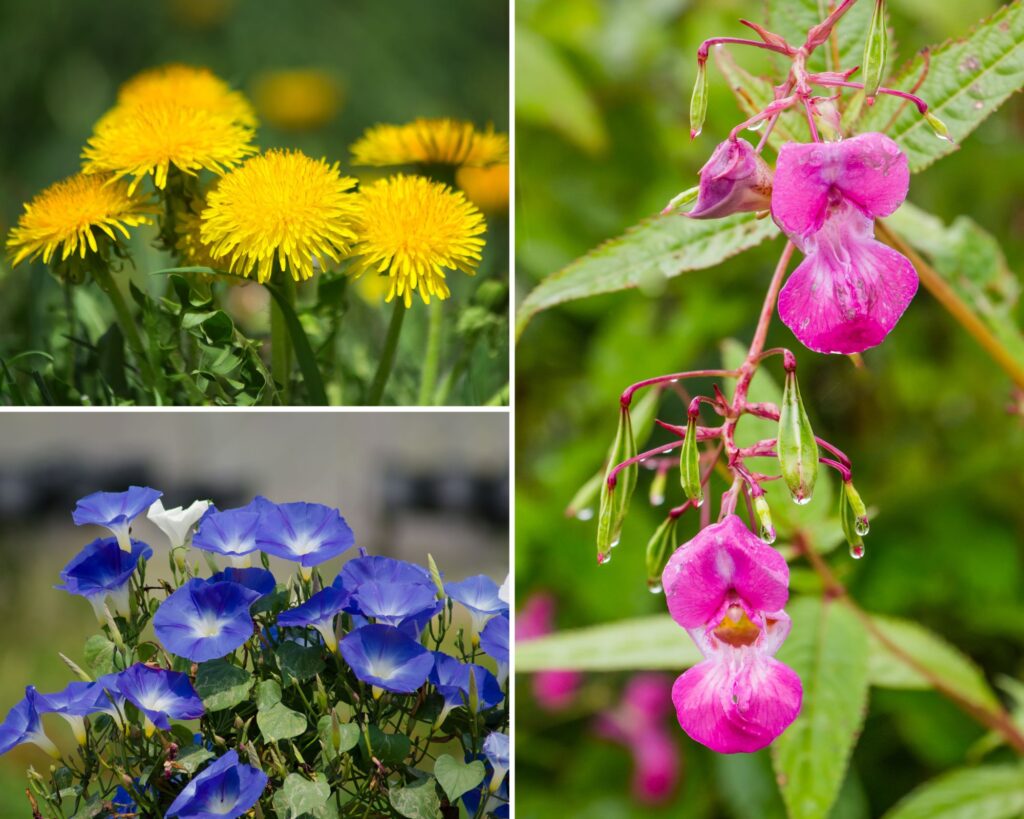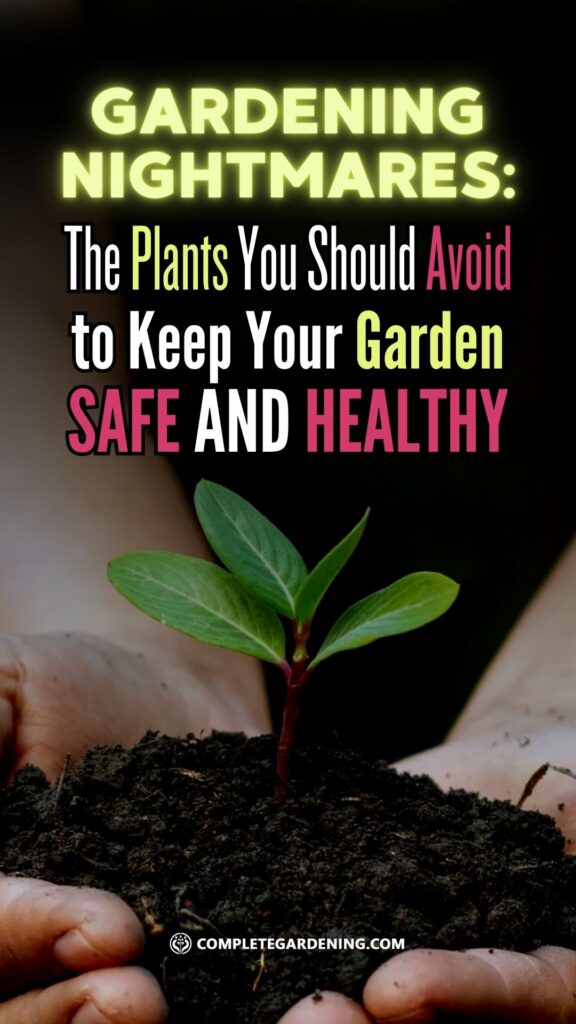Gardening can be a rewarding hobby, but not all plants make good garden companions. Some seemingly harmless plants can become invasive, overtaking other plants and even posing risks to pets and children.
Imagine tending to your garden, only to see it disrupted by an aggressive plant intruder. These troublemakers can spread quickly, drain nutrients from neighboring plants, and attract pests and diseases.
By choosing carefully and staying informed, you’ll protect your garden’s health and beauty.
The Trouble with Invasive Species
Planting invasive species can seem appealing due to their hardiness, but they often disrupt local ecosystems. These plants can lead to biodiversity loss and make pest management more challenging.
Preventing Biodiversity Loss
Invasive plants can overrun native species, reducing the variety of plants and animals in your garden. For example, Japanese Knotweed and English Ivy can quickly dominate the area they are planted in. This limits the growth of local flora.
Biodiversity is vital for a balanced ecosystem. It supports pollinators like bees and butterflies. Without native plants, these pollinators may struggle to find food and shelter.
Invasive species can alter soil chemistry, affecting plants that rely on specific soil conditions. Preventing their spread is crucial. Learn about the plants you’re considering for your garden. Opt for native or non-invasive alternatives.
Challenges in Pest Management
Invasive species can complicate pest management by altering the local habitat. For instance, the Tree-of-Heaven attracts the Spotted Lanternfly, a pest harmful to many crops and plants.
Dealing with these pests often requires additional resources and effort.
These plants may also encourage the growth of fungi and bacterial diseases, affecting nearby plants. You may find yourself using more pesticides, which is not ideal for the environment or your garden’s health.
Effective pest management starts with careful plant selection. Choose varieties less prone to pests and diseases common in your area. This reduces the need for chemical interventions, making your garden healthier and more sustainable.
By being mindful of these issues, you can maintain a thriving, balanced garden.
Toxic Plants to Keep Away
Certain plants can pose significant risks to the safety of your family and the health of your garden’s ecosystem. Here’s what you need to know about toxic plants in relation to children, pets, and allergies.
Safety Concerns for Children and Pets
Plants like Oleander, Dieffenbachia, and Castor Bean are highly toxic. Even small amounts can cause serious harm if ingested or touched.
Oleander contains toxins that can affect the heart and cause severe gastrointestinal upset. Even handling the leaves can cause irritation.
Dieffenbachia, often called Dumb Cane, can cause painful swelling and burning if chewed on. It’s particularly dangerous for children and pets curious enough to taste the leaves.
Castor Bean seeds contain ricin, a potent toxin. Ingesting just one seed can be fatal. Keep these plants out of reach to ensure a safe environment for your loved ones.
Allergy-Inducing Flora
Some plants may not be toxic but can still cause allergic reactions. Ragweed, Juniper, and Goldenrod are common culprits.
Ragweed produces a high volume of pollen that is easily spread by the wind. This can trigger severe allergic reactions and asthma symptoms in sensitive individuals.
Juniper trees, found in many gardens, can release pollen causing itching, sneezing, and respiratory issues.
Goldenrod is often mistaken as a major allergen, but it’s the Ragweed that blooms simultaneously that usually causes trouble. Nonetheless, some may still react to Goldenrod pollen.
Keep these plants away to reduce the risk of triggering allergies in your garden.
High-Maintenance Plants to Consider
Some plants require significant effort to thrive, often demanding extra water or frequent pruning to maintain their health and appearance. These types of plants can be beautiful but come with a time commitment.
Water Guzzlers
Tropical plants often fall into this category. For example, Cannas need water almost daily, especially in hot climates. If you live in an area with frequent droughts, these plants may suffer without consistent watering.
Lawns, particularly those that are well-manicured, also consume large amounts of water. Consider alternatives if you aim for a low water garden. Hydrangeas are another popular but thirsty plant.
Their large, vibrant blooms demand copious amounts of water, especially during dry spells.
Using a drip irrigation system might help manage their water needs more efficiently, but it can be costly and requires setup time. If conserving water is a priority for you, opting for drought-resistant plants could be a better choice.
Frequent Pruning Requirements
Hedges like boxwood require regular trimming to keep their shape and prevent overgrowth. You’ll need to prune them several times a year, which can be labor-intensive.
Roses are beautiful but notoriously high-maintenance. They need frequent pruning to promote blooming and prevent disease. Wisteria, while gorgeous, requires careful training and annual pruning to avoid becoming invasive.
Fruit trees also demand attention. For example, apple trees need yearly pruning to ensure good fruit production and tree health. This can become quite a task if you have multiple trees.
Maintaining these plants can be rewarding, but be prepared for the work involved. Investing in the right tools, like quality shears and pruners, can make the job easier and more efficient.
Garden Thugs: Aggressive Spreading Plants
Some plants expand rapidly and aggressively, outcompeting other garden members. Understanding root runners and self-sowers can help you manage these vigorous growers.
Root Runners
Certain plants spread through underground root systems. Mint and bamboo are prime examples. Mint, with its invasive roots, can quickly overrun garden spaces, suffocating nearby flora.
Bamboo can spread several feet away from the original planting site if left unchecked. This makes it challenging to control in small gardens.
Horsetail also possesses a robust root system. It can regenerate from the tiniest root fragment, making it nearly impossible to eradicate once established.
To manage these plants, you can use root barriers or plant them in containers. Regular monitoring is crucial to prevent them from escaping their designated areas.
Self-Sowers
Plants that reproduce by scattering seeds can quickly overwhelm your garden. Dandelions and morning glories are notorious for their prolific seed production.
Dandelions produce numerous seeds with fluffy tufts that travel long distances, rooting easily wherever they land. They often sprout in unwanted places, complicating their removal.
Morning glories can produce large quantities of seeds. Once they get a foothold in your garden, you may find them entwining with other plants, making them difficult to eliminate.
Himalayan balsam is another self-sowing plant that quickly colonizes large areas. Its explosive seed pods can launch seeds up to 23 feet away. Removing these plants before they seed is essential to control their spread.
To keep self-sowers in check, consider deadheading flowers before they set seed and regularly pulling out unwanted seedlings.
Negative Impact on Local Wildlife
When you grow certain plants in your garden, you might unintentionally harm local wildlife. Some plants can be invasive, outcompeting native species and disrupting the ecosystem.
Japanese Knotweed is one example. It spreads aggressively and can choke out native plants. This reduces food sources for local animals and insects.
Another problematic plant is English Ivy. While often used for ground cover, it can dominate and kill trees. This impacts birds and small mammals that rely on trees for habitat.
Giant Hogweed might look beautiful, but its sap is dangerous and can cause severe burns. Handling this plant puts both you and your pets at risk.
Butterfly Bush attracts butterflies but can outcompete native plants that are more beneficial to local insects and birds.
Planting Bradford Pear Trees can also be risky. They tend to spread quickly and choke out native flora, reducing habitats for local wildlife.
Burning Bush is another invasive plant. Its dense foliage can create a monoculture, pushing out native plants that support a diverse range of wildlife.
Additionally, Russian Olive is known for its hardiness. Unfortunately, it competes with native plants for water and nutrients, impacting the surrounding ecosystem.
Consider native plants when designing your garden. They provide food and habitat for local wildlife, enriching your outdoor space and supporting the ecosystem.
Creating a healthy and thriving garden requires careful consideration of the plants you choose to grow. Avoiding invasive species, toxic plants, and high-maintenance varieties can save you from many common gardening headaches.
Toxic plants pose risks to children, pets, and even adults, while allergy-inducing flora can cause discomfort for those with sensitivities.
High-maintenance plants, although beautiful, can demand significant time and resources, making them less ideal for gardeners looking for low-effort options.
Moreover, certain plants can negatively impact local wildlife, either by outcompeting native species or creating inhospitable conditions.
By being mindful of these factors and making informed choices, you can maintain a garden that is not only beautiful but also healthy and harmonious.

